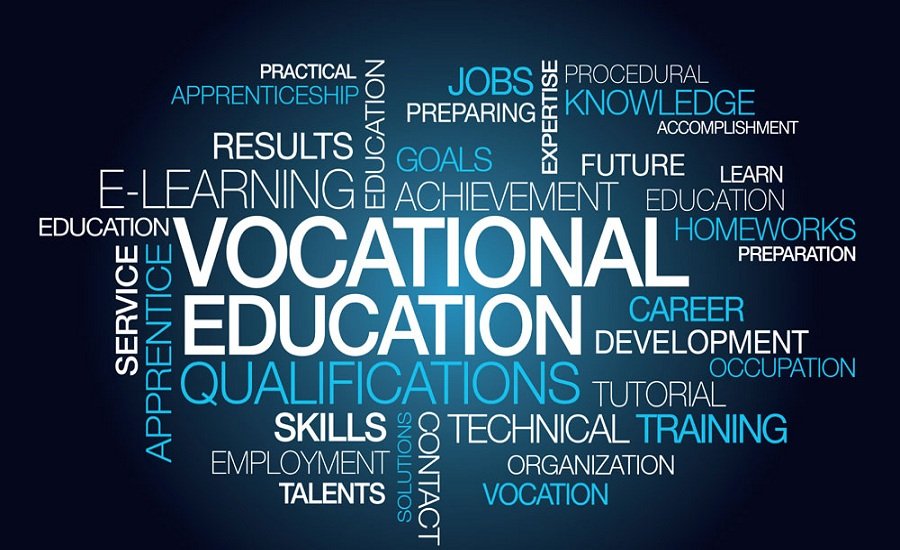
New education policy was launched after 34 years. It has many progressive ideas about the roadmap of 21st century India. The policy lists overall revised changes in curriculum and assured education for every unserved section of the society. The new education policy initiates many creative ideas to increase the skills and capacities of the students at every level. One such initiative is the vocational training of students for their holistic development. The students get hands-on experience through a local vocational expert in different areas like craftwork, gardening, metalwork, carpentry etc. The Ministry of Education, Govt of India, has sent their proposal to NCERT to design NCFSE “National Curriculum Framework for School Education” where a practice-based curriculum designed from class 6th till Class 12th has been proposed. Vocational classes and programs will also be made available online. The government is also planning to make vocational activities available in native or regional language for better understanding. The policy suggests that a 10 days bag less period sometime during classes 6-8 may be introduced and these types of courses may also be offered during grades 6-12 and in online mode too. The bagless periods may include sports, quizzes, arts etc. Now the curricular, extracurricular and co-curricular courses will be treated at par for credit and evaluation purposes.
According to a report titled ‘Global Human Capital Report 2017’ by World Economic Forum, Norway stands at numero uno position in skills and education and has the best vocational education and training program. Many countries like the USA, Germany, New Zealand, Finland, Switzerland, etc. perform well in vocational skills and development but developing countries like India are lagging. Less than 5% of Indian students aged between (19-24 years) received formal vocational training compared to many developed countries like the USA, South Korea and Germany. According to the 2011 Census, India has 422 million youth population and it gained a relative advantage over the year but formal education yet couldn’t provide the young population of India as a good workforce. Ishwar Bhai Patel Committee’s recommendations were adopted by the Ministry of education and SUPW (Socially Useful Productive Work) was introduced in 1978 to bring vocational education activities among the students of the various board like CBSE, Kendriya Vidyalaya, Jawahar Navoday Vidyalaya, etc. The SUPW program failed because the student didn’t take it seriously as it stands at the very corner of the report card and its marks weren’t even added to the overall performance report. Hence, it couldn’t generate interest in vocational activities in formal education.
In Developing countries like India, people think that vocational education is a second-class choice of education because it is rooted in their minds since the colonial period. They think that Vocational education is an inferior job. Christian missionaries of Europe made many changes in education policy during their colonial period across the world. The missionary education policy was brought to disorganize the native people because it was easy to rule and convert them. Many countries like India, Kenya are examples of them. Gurukul’s methods of India and traditional education methods of Kenya were based on self-exposure and vocational training. Maximum teaching was delivered by father, mother, gurus, siblings, and relatives. These educations were means for livelihood, survival, self-realization, and were mostly in the form of verbal among various activities and exposure.
To quote Swami Vivekanand’s views on education who once said “What is education? Is it book learning? No. Is it diverse knowledge? Not even that. The training by which the current and expression of will are brought under control and become fruitful is called education”. One such example of skill and self-centered education is from “Swaraj University” India which focuses on self-designed learning and engages learners through vocational training. There is no degree and diploma required for joining this university and they don’t provide a degree after completion of the course but encourage individuals to develop their skills, portfolios, and livelihood. Many educational institutes like Swaraj University, Mayapur Village of West Bengal, and Rishi Valley School now follow the earlier Indic principles of vocational education for giving a holistic approach to education.
Many countries like Germany, Switzerland, and the USA follow the principles of inquiry and research in vocational education. The German model of vocational education training is successful and it has inspired many other countries like Italy, Spain, Greece, Portugal, and other European nations. Germany has the lowest unemployment among youth in Europe and all credit for this goes to Germany’s dual training system which comprises practical training at the workplace and theoretical training in the classroom. In India, vocational education doesn’t make students a job creator, but it always emphasizes job seekers. New education policy aims to increase the overall gross enrolment ratio in higher education including vocational education. Vocational education will always highlight the point of skill development and community building. It may also be funded by both private and public institutions for smooth running. India has a good youth workforce but the unemployment ratio increases day by day because we are focussing on quantity work rather than quality work. If levels of skilled workforce are increasing then it also increases the productive human resources and it automatically leads to an increase in the nation’s productive capacity.
The young Indian population is demanding vocational education and training to reap the benefits of globalization. Vocational education and training (VET) is often seen as the silver bullet to the problem of unemployment in youths. In the changing scenario the chances of employment for the graduated and the non-graduated students are getting limited day by day because of the changing work environment and employment requirement. The youth population needs to be more flexible in learning opportunities that are multi-skilled. It is the need of the hour for skills based and company oriented learning pedagogy and learning .It is the need of the hour to make India hub of job providers instead of job seekers. It is expected that the vision will be achieved when the current policy is implemented in the letter and spirit.





Add comment